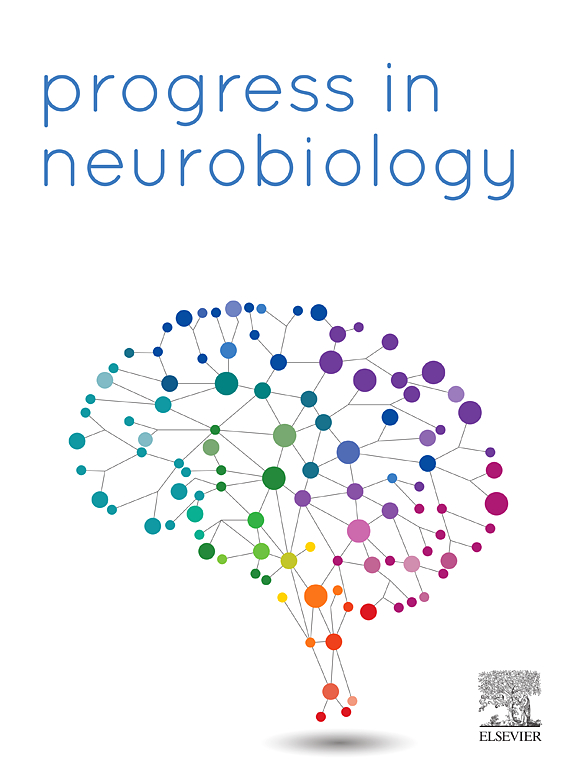EphB2 receptor tyrosine kinase-mediated excitatory synaptic functions are negatively modulated by MDGA2
IF 6.1
2区 医学
Q1 NEUROSCIENCES
引用次数: 0
Abstract
MDGA2 is an excitatory synapse-specific suppressor that uses distinct extracellular mechanisms to negatively regulate various postsynaptic properties. Here, we identify EphB2, an excitatory synapse-specific receptor tyrosine kinase, as a new binding partner for MDGA2. The first three immunoglobulin domains of MDGA2 undergo cis-binding to the ligand-binding domain of EphB2, enabling MDGA2 to compete with Ephrin-B1 for binding to EphB2. Moreover, EphB2 forms complexes with MDGA2 and GluN2B-containing NMDA receptors (NMDARs) in mouse brains. MDGA2 deletion promotes formation of the EphB2/Ephrin-B1 complex but does not alter the surface expression levels and Ephrin-stimulated activation of EphB2 receptors and downstream GluN2B-containing NMDARs in cultured neurons. AlphaFold-based molecular replacement experiments reveal that MDGA2 must bind EphB2 to suppress spontaneous synaptic transmission and NMDAR-mediated, but not AMPAR-mediated, postsynaptic responses at excitatory synapses in cultured neurons. These results collectively suggest that MDGA2 is a versatile factor that suppresses distinct excitatory postsynaptic properties via different transsynaptic pathways.
MDGA2负向调节EphB2受体酪氨酸激酶介导的兴奋性突触功能
MDGA2是一种兴奋性突触特异性抑制因子,使用不同的细胞外机制负性调节各种突触后特性。在这里,我们发现EphB2,一种兴奋性突触特异性受体酪氨酸激酶,作为MDGA2的新结合伙伴。MDGA2的前三个免疫球蛋白域与EphB2的配体结合域进行顺式结合,使MDGA2与Ephrin-B1竞争EphB2的结合。此外,EphB2在小鼠脑内与含有MDGA2和glun2b的NMDA受体(NMDARs)形成复合物。MDGA2缺失促进EphB2/Ephrin-B1复合物的形成,但不改变培养神经元中EphB2受体的表面表达水平和ephrin刺激的EphB2受体和下游含glun2b的NMDARs的激活。基于alphafold的分子替代实验表明,MDGA2必须结合EphB2才能抑制神经元兴奋性突触的自发突触传递和nmdar介导的突触后反应,而不是ampar介导的突触后反应。这些结果共同表明MDGA2是一个多用途因子,通过不同的跨突触途径抑制不同的兴奋性突触后特性。
本文章由计算机程序翻译,如有差异,请以英文原文为准。
求助全文
约1分钟内获得全文
求助全文
来源期刊

Progress in Neurobiology
医学-神经科学
CiteScore
12.80
自引率
1.50%
发文量
107
审稿时长
33 days
期刊介绍:
Progress in Neurobiology is an international journal that publishes groundbreaking original research, comprehensive review articles and opinion pieces written by leading researchers. The journal welcomes contributions from the broad field of neuroscience that apply neurophysiological, biochemical, pharmacological, molecular biological, anatomical, computational and behavioral analyses to problems of molecular, cellular, developmental, systems, and clinical neuroscience.
 求助内容:
求助内容: 应助结果提醒方式:
应助结果提醒方式:


